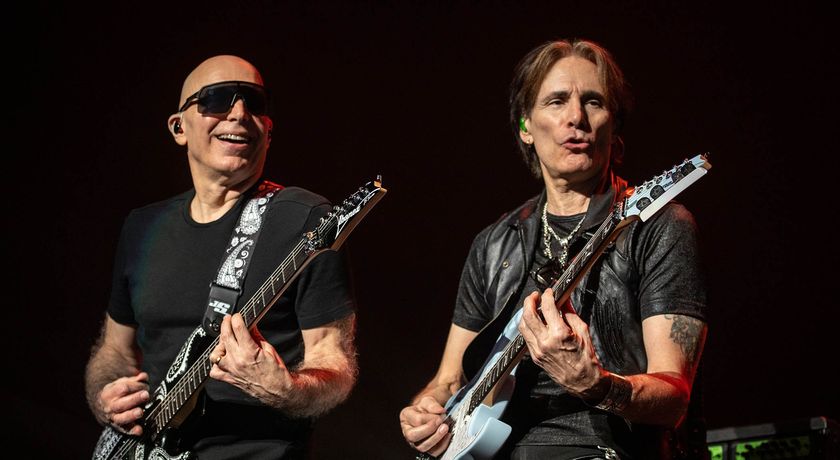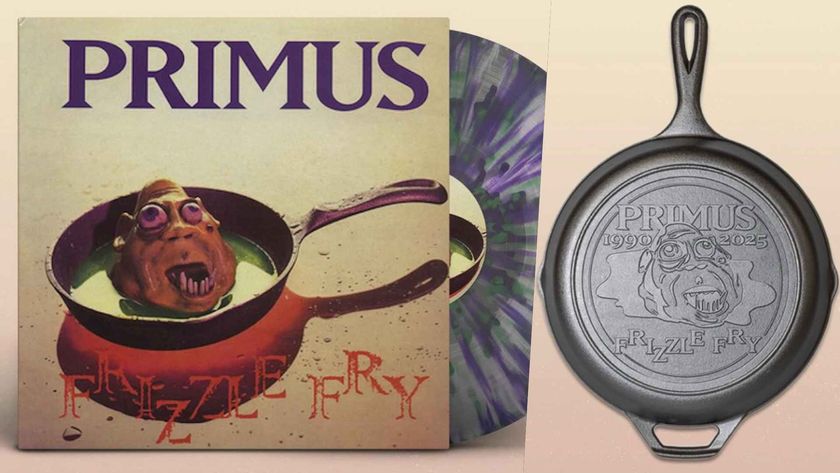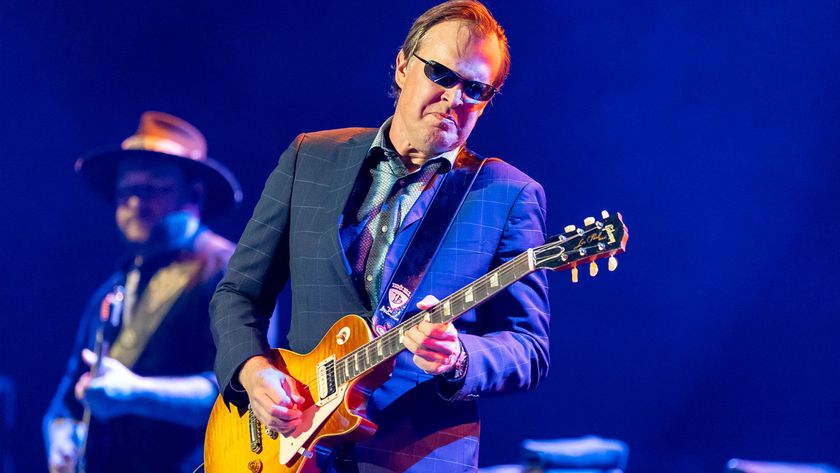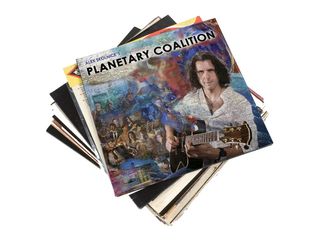
Alex Skolnick talks Planetary Coalition track-by-track
Most guys would be content with being a metal guitar god, but Alex Skolnick isn't like most guys. During breaks from his high-profile day job as the lead shred ace for thrash kings Testament, he's issued three winning albums with his own jazz outfit, the Alex Skolnick Trio, and has performed with flamenco superstars Rodrigo y Gabriela. But on his just-released new album, Planetary Coalition – which features 27 players from five continents and blends the musical styles of gypsy, Indian, Latin, Middle Eastern, East Asian, Balkan/Eastern European, African and other indigenous lands – Skolnick makes what is perhaps his most fully realized artistic statement and establishes himself as a master world musician.
“The album really reflects my listening habits," Skolnick says. "I don't listen to the same thing all the time, and I'm not content just being a diverse listener. I look at it like how actors are able to step into different roles. Sometimes they'll do action movies, and other times they'll do independent films. To me, metal is a little more like an action movie. Doing something like this, however, feels like more of an independent, Sundance Film Festival-type thing. It may not receive the same attention, but those in the know will really appreciate it."
The origins for the album go back to 2012, when the Alex Skolnick Trio were booked to play a show on Make Music Day in New York City's Union Square. His regular AST bandmates were unavailable, but Skolnick, who had been toying with the idea of an acoustic world-oriented project, quickly put another band together and played the gig.
"I actually mined some of my trio material," he says, "but I also wrote a few tunes in a hurry that wound up on the album – Island In The Sky, Back To The Land, and the last track, Sleeping Gypsy." He adds with a laugh, "It was record heat that day – the hottest on that day, ever – and we just did an album release party and it was the coldest day for November 29th that it's been for decades. So I've come full circle with it in some ways."
World music aficionados should recognize the sounds of many of the instruments featured on Planetary Coalition – there's oud, santoor, tabla, qanun and darbouka, among others. Save for an electric guitar solo on the Holy Land-inspired Rock Of Ramallah, Skolnick stuck to two main acoustic models. "For the Latin tunes, it's a Yamaha NCX200 nylon string," he says. "That really captures the sort of Spanish guitar flavor. And for steel string, I tried out a bunch of different instruments, and the one that worked best in the studio was my Martin JC-16GTE Jumbo. That became the go-to guitar on all the steel-string songs."
On a couple of songs, Skolnick used an 11-string Godin Inuk Ambience Steel guitar. "Sometimes it sounds like an Arabic oud; other times, it sounds like the tres, the Cuban instrument," he says. "It came in really handy for layers, and I actually used it for a solo on the track Negev Desert Sunset."
Skolnick notes that he's had success in opening some Testament fans' ears to jazz – "Some don't get it, and that's OK, but a lot have, and that's great" – and he's hopeful that Planetary Coalition could tempt a contingent of his longtime admirers to become more world music curious. "I think the majority have had a positive reaction," he reports happily. "And even the ones that don't necessarily get it, they recognize that there's something going on here, that there is something of quality, even if it's not familiar."
On the following pages, Skolnick walks us though Planetary Coalition track-by-track. You can purchase the CD via ArtistShare and Amazon, and you can download the set at iTunes and ArtistShare.
Below: Listen to album excerpts
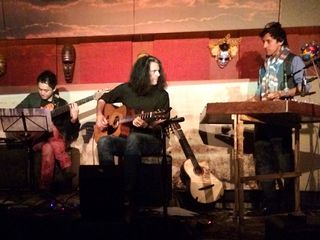
Island In The Sky
“This was based on a part that I had laying around that I'd never been able to record. Just somehow, it didn't fit with any of my previous projects of any genre. But it was so nice, and I had used it for loop improvisations by myself. I would occasionally do these appearances at the NAMM show, where I'd loop a part and play over it. I love playing over this and thought it could be developed into a song.
“So when I did that first Union Square gig in 2012, that was the first thing I took and developed into a tune. I think it was also inspired by working with the guys on the track – they play in a local group, a New York-based global trio called House of Waters. It's percussion, electric bass and santoor. The santoor player, Max ZT, studied with Pandit Shivkumar Sharma, one of the most renowned players of that instrument, who has worked with Shakti at times. Part of the composition was inspired by that instrument. Just coming up with sounds that I thought would sound really cool with the santoor.
“Since it kicks off the album, it's an introductory piece. Almost all the other tracks have guests from different parts of the world but this one is the core band and not specific to any one region.The title is actually from a passage in a novel by a good friend of mine, Bradford Morrow, who is a novelist and literary professor. It's a different meaning in the book, but in the song it refers to the planet. I was just thinking about the Earth and how we need to be more aware of issues like climate change. As it turned out, as I mentioned earlier, our very first show, where we had first played the song, was the hottest day on record. So there are a lot of interesting coincidences.”
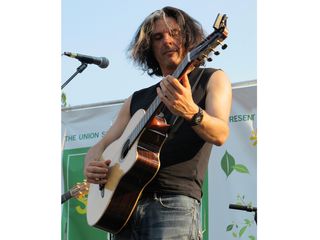
Salto
“The guys who play on this are from an agricultural region in Argentina. They're very knowledgeable about Argentinian folk music, but they're heavy metal fans, as well. So they're really interesting, and they have a group called Raza Truncka. So before they even knew about that I was working on this project, they'd written to me and told me all about their village and all the issues that they've dealt with in these farming villages. So natives being displaced, exploitation of agricultural workers, monopolies by global corporations – kind of the same thing that Neil Young has been speaking up about.
“So it’s directly related to that, especially with soybean crops and biotech giants taking over. These guys had written me their story. Then, of course, I heard them and I realized, ‘Oh, my God, this will work perfectly for the album.’
“Originally, I wasn't sure what to do with them. With Argentina, the first thing that comes to mind is tango. So I actually I had written this tango, but they said, very nicely, ‘This is very good, but this actually isn't our music.’ [Laughs] They explained that tango is more of an urban phenomenon from Buenos Aires. There are debates about where it actually comes from. Some say it comes from Uruguay, and others say it comes from Europe, though it obviously flourished in Argentina. But these guys told me about their folk rhythms – one of them is called a chacarera. That's the rhythm on this tune. So I built the tune around the chacarera rhythm, and it gave me a great excuse to dive into my sort of flamenco-inspired licks. We dedicated it to Salto, the city where they're from.”
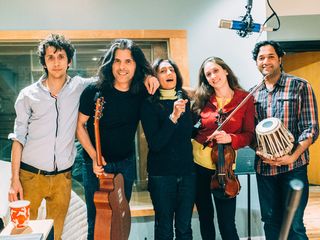
Passage To Pranayama
“You're actually hearing the guitar, but it sounds like a sitar. I've got a different tuning –I've actually changed one of the strings. I know with Led Zeppelin, Jimmy Page would have these secret tunings, even though we know what most of them are – DADGAD, for example. I tuned the G to F Sharp, so when I play in B, it gives me this wonderful sound, and if I play high on the neck, it's very sitar-like.
“I was thinking of having a sitar, but the song sounded so good with the santoor. This actually came up at various times, throughout the record: The santoor was OK in that key, but the sitar was not; I would have had to do it in C Sharp or C. I tried, and it just didn't work, so I play the role of the sitar.
“I wanted to do something that captured the flavor of India. I had been to Bangalore on my first trip to India, and I was very inspired by that. I've also long been a fan of Shakti and John McLaughlin, and I often play along with those records. This kind of gave me a chance to explore that style. Of course, when it came to getting real Indian musicians, I knew I had to have tabla – I knew that would work.
“Nitin Mitta has been described as the new Zakir Hussain – he’s just fabulous. He's the regular tabla player for the vocalist, Kiran Ahluwalia. I originally imagined this as an instrumental composition, but just on a lark, I had mentioned to Kiran about the project and what we were doing. We talked about it, I played her the music, and she was very into it. She's a big deal. She's a two-time Juno Award winner, and she's from Canada, but her background is Indian.
“Once she signed on, the tune very much became about her, to me, in a good way. I just said, ‘OK, I want to feature her.’ She’s amazing. She'll be very familiar to certain world music fans.”
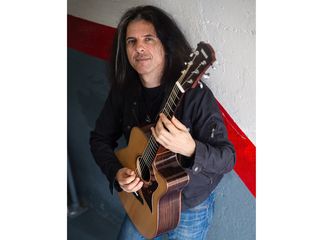
Taksim Square
“That's actually a steel string, as well. I'm kind of going for a new sound on this. I didn't have an actual oud player on that track, although there is one later. But I played it in the style of the oud. The really big standout instrument here is called the kanun. It's a traditional Turkish instrument, kind of like a zither. Over the years, I've heard many kanun players, and I've always thought their sound was really exciting. This is something I think more people – should I say, Western listeners – need to hear.
“To me, it captures a lot of what attracted me to lead guitar playing. I never liked fast playing just for the sake of fast playing. Whatever it is, I always like it when there's a sense of passion and expression, as well. By nature, the kanun is played very fast, so I think it'll be exciting to a lot of fans of fast playing.
“Tamer Pinarbasi, the kanun player, plays in a group called the New York Gypsy All Stars. The other guys on the track are also from in that band - another Turkish musician, Engin Kaan Gunaydin, who is a great drummer, and the bass player, who is Greek. So you have two Turks and a Greek in the same band. These regions have often been at odds. It's always nice to see musicians working together from different parts of borders. It was the 2012 protests in Taksim Square in Istanbul that inspired this piece and the title.”
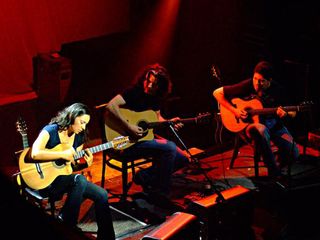
Playa La Ropa
“I had played as a guest on Rodrigo Gabriela's album, 11/11, and did a bunch of shows with them. We had a lot of great jams on stage, but also offstage. Even though I had often played electric with them, I always wanted to do something where we all play acoustic – them on nylon, me on steel.
“Playa La Ropa is actually a rope-shaped beach in the region where they're based, which is near Zihuatanejo in Mexico. I got very lucky that we were able to actually track this in the studio, because we were planning to send tracks back and forth. The scheduling was really crazy because their latest release had come out, and they were on the road a lot. Fortunately, the David Letterman Show brought them to New York, so the day before they did Letterman, they came in the studio and we did the track.”
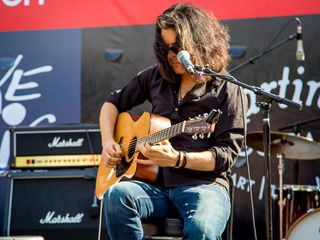
Django Tango
“As I mentioned earlier, I had originally envisioned the tango for the Argentine guys from the agricultural region. Then they set me straight. [Laughs]. But I still had this great tango piece, and somehow when I was playing it, it reminded me not only of Buenos Aires, but the guitar style just sort of brought out these Django Reinhardt-influenced ideas. So it's a little bit of European Gypsy jazz mashed up with Argentinian tango.
“I needed a Stéphane Grappelli, and I told my violinist, Rachel Golub, ‘You're going to be Stephanie Grappelli!’ I mentioned in the liner notes that some musicians are household names, but others deserve wider recognition. Musicians like Rachel you might not know, but you’ve seen her or heard her because she's on a lot of the biggest pop records. She gets called by Saturday Night Live any time they need strings. She's really, like, one of the best in New York. Yet she’s also lived in India and studied Indian music, and she's a full-fledged classical violinist who plays with St. Luke's Orchestra.
“To the European element, we have Raif Hyseni, who is actually a star in Albania on accordion. Normally, with tango, if it was a real, a pure Argentinian tango, it would have bandoneon, but we wanted this to be a hybrid, with the European element. For the Argentinian side, we have Pablo Aslan, who is a Grammy nominated artist, one of the most-respected tango bass players. He really added the authenticity. Then a friend of mine who I had gone to the New School with, Dario Boente, was a piano player – he played the piano part. He's also from Buenos Aires.”
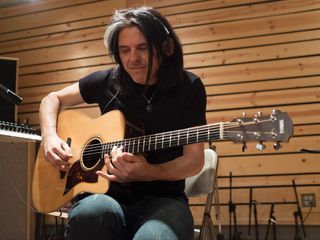
Old World Dance
“Here I have the rhythm section of the New York Gypsy All Stars. Panagiotis is Greek – this is definitely the mash-up of Greek, klezmer and Baltic. There are common threads between these types of dance tunes from weddings or traditional ceremonies. I've always loved this type of music – very high energy. We also have Rachel and Raif on violin and accordion, respectively, from the previous track. Then there’s the addition of clarinet, Vasko Dukovski, who is from Macedonia. It's a real mix – Europeans, Greeks and American Jews. It's a party.
“It was funny because the New York Gypsy All Stars play very complicated music; their piano player/composer, Jason Lindner, is a great, brilliant, very complex player. And the rhythm section told me my tune was really hard for them, so I realized, ‘OK, if I can challenge the New York Gypsy All Stars, then it must be a tough tune.’” [Laughs]
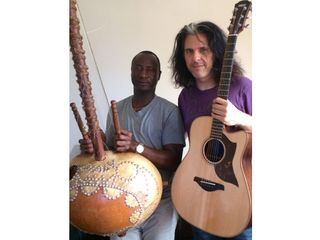
Alla La K'e
“This is actually a traditional Malian tune. It’s just myself and Yacouba Sissoko, who is from Mali but is now based in New York. And thank goodness, because this is a track that had to be done live. He's worked with Harry Belafonte and Paul Simon; he's kind of an elite African musician.
“I had heard him do this piece in concert, and I imagined all of these ideas that I could play over it. We met for the first time and rehearsed, and it was just beautiful and so natural. There's no gimmicks; there's no effects. It's just pure music, which is really what I wanted to capture on the whole record.”
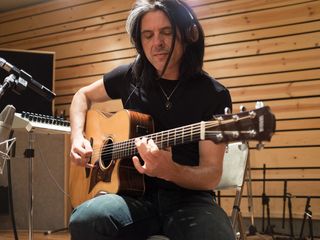
Back To The Land
“This is me and Yacouba, but we're joined by the band from the first track, Island In The Sky. It certainly captures the rhythm of Africa. Luke Notary takes a great percussion solo. For music nerds, a Dorian mode is used a lot. The progression is actually very inspired by Miles Davis. It’s like So What in that it has a very similar chord progression but with a very different rhythm, an African 6/8.
“Soloing over it, a lot more jazz-oriented ideas came to mind. Our bass player, who is Japanese, Moto Fukushima, he takes a really great solo in that as well. It's almost like jazz meets African. It’s hard to pin down sometimes.”
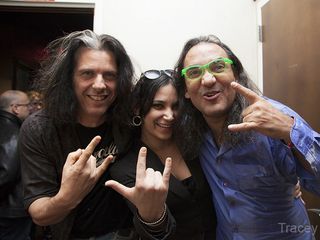
Mojito
“Believe it or not, this is in 4/4. It was definitely one of the most challenging songs for me, and it was very educational. We actually just performed this the other night, but we didn't have the musicians from the recording there, so I was teaching the other guys how to play it. I'd become more fluent with these types of Cuban rhythms, but it really took some getting used to.
“The rhythms fall on parts of the beat that you would not expect, almost like these dormant parts of the measure that in Western music we don't really think about. With Cuban rhythms, they create this incredible groove.
“This track has Horacio ‘El Negro’ Hernandez, who is a legendary Cuban drummer. His daughter, Jennifer Hernandez, plays piano, and we wrote this song together. The bass player is Jose Armando Gola, who's been on tour with Gonzalo Rubalcaba lately and plays with all the Cuban greats. It's really like Cuban royalty here.
“Jennifer wrote the chord progression for the first part, and I wrote the melody. She sent me her piano track without a click, just as a demo, and I tried putting the melody to it, and I was off by one subdivision. I think that happened twice – then finally I got it. In Cuba, they grow up with this stuff, and they hear it. It's really one of my favorite tunes.
“For the ending section, I do a solo on the nylon string, the Yamaha, and get a chance to dive into the Di Meola, Strunz & Farah territory, which is a lot of fun.”
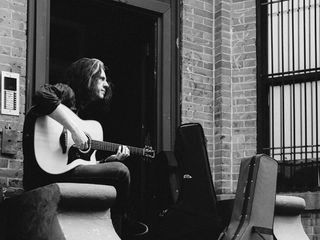
Rock Of Ramallah
“I play some electric on this one, but originally that wasn't the plan – I was going to keep it all acoustic. The oud player on this, Adnan Joubran, is incredible. He's Palestinian and he plays with his brothers in a trio called the Trio Joubran; they’re based in Paris. We had done a couple shows together with his trio and Rodrigo y Gabriela. Adnan actually suggested that I play electric on this; he really liked the electric stuff, I guess.
“The Holy Land has seen so many difficulties over the years. I think it was especially difficult, this year, particularly this summer. So without getting into it, I just felt like the electric guitar helped capture some of the energy of that. It's kind of a surprise, yet it fits perfectly. Now I can't imagine it any other way.”
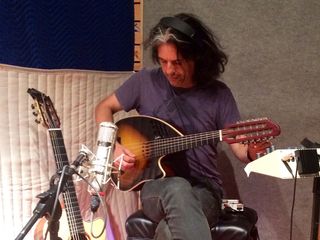
Negev Desert Sunset
“The Negev Desert is the largest desert in Israel. I wanted to do a piece on the other side of the Holy Land. The percussionist is named Gadi Seri. He’s a virtuoso who’s probably best known for playing with Noa – she’s one of Israel's biggest pop singers. She's a great singer, and she does jazz stuff, as well. I think Metheny collaborated with her at one point.
“I wanted to do a piece that sort of captured the flavor of the desert. I actually used a different guitar, a Yamaha steel string A3R. Actually, it’s the same tuning I used for the tune with Rodrigo y Gabriela, Playa La Ropa. For this one, I tuned the B to A, which creates some different options. In the beginning, I'm doing this pull-off lick that just would not be possible without that tuning.”
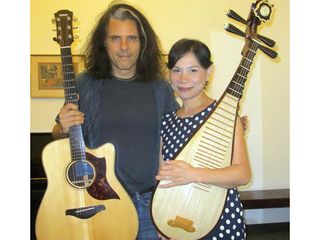
Return Of The Yi People
“This is an arrangement of a Chinese piece called Dance Of The Yi People, which is one of the most popular pieces in China for the pipa. The pipa is this wonderful instrument. I've heard it played on public television and NPR. Once I heard somebody play one in the New York subway. I've always been mesmerized by it, and I've always heard possibilities of combining it with guitar.
“I tracked down Yihan Chen for it. I knew I needed somebody who lived on the East Coast. There were a couple others I had talked to first, but this is one that needed to be recorded live in the studio. The original piece is much longer, like the part you hear at the beginning, which to me is the grand entrance, that doesn't happen until like seven minutes into the original.
“I thought, ‘OK, we're going to start there, and then we're just going to choose different pieces of the original, and I'm going to reharmonize it.’ The pipa is a terrific instrument, but it's limited as far as which chords it can play. So I added a lot of harmony to it, and I got a hold of Yihan. She probably thought I was nuts – I don't know what she thought. [Laughs]
“But we met and hit it off and from the moment we first played that piece. It was just really special. I think even if we recorded our very first one, it almost would have been worth releasing, because just every time we play it, it's just magical. We're talking about doing some more stuff together. Somehow it totally made sense. Nobody, to our knowledge, has done this, and yet it just feels really natural. It's one of my favorite pieces to play.”
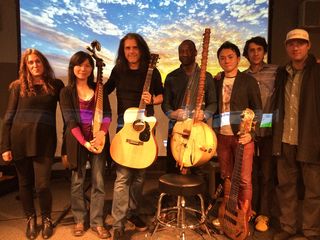
Sleeping Gypsy
“This was in the first batch of tunes I wrote, so it's very fitting that Island In The Sky and Sleeping Gypsy were the first two songs created for the bass, and they’re the first and last tracks on the record.
“I had written it for my girlfriend, Maddy SJ, who is also the artist on the record. She did wonderful artwork for record; she's an architect and is a multinational person, too, of European and Indian descent - another blend.
“Also, it was fitting because it's the same core group that plays on the first track, with the great violinist, Rachel Golub, who kind of creates the gypsy flavor. It's perfect to close the album, because by this time, you’ve had this audio experience going all over the world. So you're a gypsy, and you're probably very tired from all the travel. [Laughs] So it's Sleeping Gypsy.”

Joe is a freelance journalist who has, over the past few decades, interviewed hundreds of guitarists for Guitar World, Guitar Player, MusicRadar and Classic Rock. He is also a former editor of Guitar World, contributing writer for Guitar Aficionado and VP of A&R for Island Records. He’s an enthusiastic guitarist, but he’s nowhere near the likes of the people he interviews. Surprisingly, his skills are more suited to the drums. If you need a drummer for your Beatles tribute band, look him up.
Most Popular









